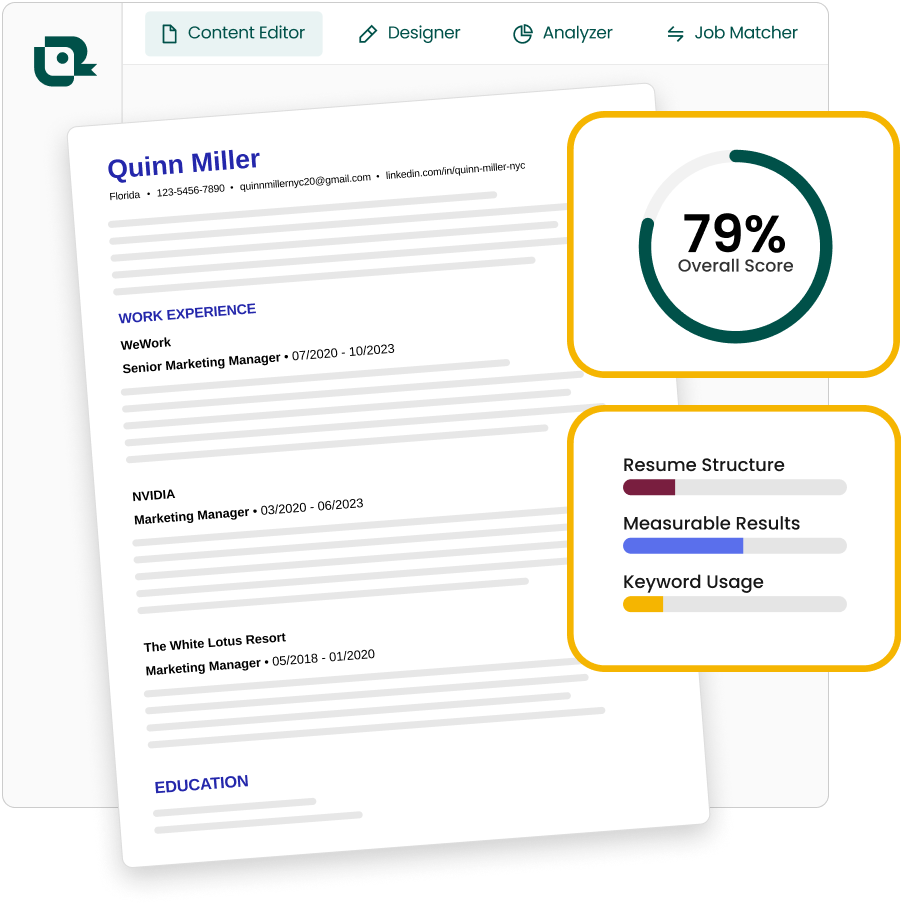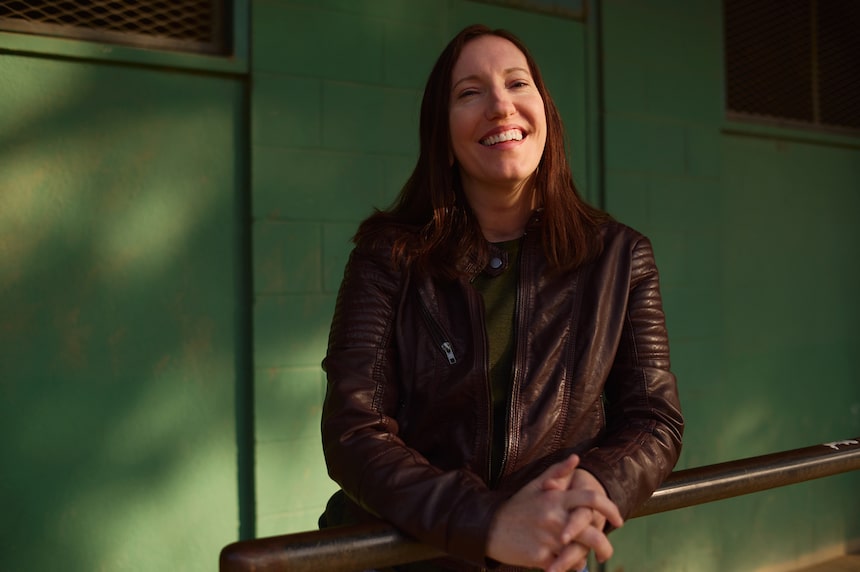3 key takeaways
- Why you should list future jobs on your resume
- What kind of future job goes on your resume
- How to write future work on your resume with the Teal AI Resume Builder
When you think about a resume, you likely picture a run-down of all the jobs you've previously held. Even more than that, your resume should be a document that showcases all your resume work experience, past positions, skills, and education in a focused and eye-catching way.
So, what happens when you've been hired for a job or an internship but the job hasn't started yet? You might think, can you even put future things on a resume? You want to showcase that exciting role on your resume but wonder if it's appropriate. And if it is, how do you do it? Do you pretend you're already at that job? What kinds of details can you include? Do you need permission from your hiring manager to include it?
This guide offers some suggestions for getting all your jobs—even future ones—on your resume in a way that will reflect what you've done as well as what you're capable of.
What kind of future job might go on your resume?
Especially if you're just graduating from and undergrad university or about to start an internship, putting a future job on your resume can be a good way to highlight your new role.
Future internship
For instance, if you've accepted an upcoming internship but haven't started it yet, that's an example of a future job. In fact, many college students are encouraged to apply to internships as many as six months ahead of time. That means applying in January for a summer internship.
Traditional jobs
The same applies if you've been offered and accepted a traditional position by an employer, but the start date is delayed. This can happen if you requested a specific amount of time between your old job and your future opportunity, or if the role won't become available for a matter of weeks or months.
Can I put a future job on my resume?
You might be wondering, Why would I write an incoming job on my current resume in the first place? The general answer is that you always want to have an up-to-date document at the ready. If you've received an offer and accepted it in writing, then you can feel pretty confident it's going to happen—but you never know what other future opportunities might become available.
Including future work on a resume is especially wise if the future position in question isn't a full-time role. In this case, you may still be looking for part-time opportunities, freelance gigs, or even secondary internship opportunities in addition to the one you've already secured. When you have your upcoming position already listed, it can help give other potential employers a sense of your availability and also indicate your burgeoning experience in the field.
If the job position or expected internship is especially well-reputed (say you've accepted a role as a White House intern) then all the more reason to showcase the future role on your resume.
If you feel unsure, ask your hiring manager or future supervisor if it's okay to include your incoming position on your resume. Chances are, they'll be glad to hear you're committed and give you the green light.
How to write future work on your resume
It's a good idea to update your resume frequently, and also to tailor your resume for each new job as you apply. Good news—Teal can help!
Don’t forget to update your resume with your latest experience and achievement-based bullet points. The job of your resume is to get you in the door. Optimizing it will help you land interviews for the next opportunities that excite you. Teal's free AI Resume Builder can help you keep your Work History up to date and help you write metric-driven bullet points with the click of a button.
Add your future work details to your resume as soon as you secure a new role, whether you start in two weeks or six months.
Now, let's get into some examples. How do you actually write an incoming job on your resume?
1. Look at your current resume
Go to the “jobs” section. If this is your first job ever, great! If not, add it to the top of the list. This way you'll keep things in chronological order from top to bottom, and also attract the reader's eye to the top of the list.
2. Add the title of your new position
Will you be an intern? What kind of intern? Be specific if you can, like “editorial intern,” or “design intern,” or “graduate research intern.”
Adding the target title on your resume can help add valuable keywords for applicant tracking systems (ATS) as well as reel in future hiring managers looking for certain terms.
Use Teal's AI Resume Builder to quickly compare the skills and keywords in the job posting to those in your resume. Make sure to add any relevant experience to your customized resume and to your application answers.
3. Add the dates
This is where you'll indicate that it's a future job. For instance, if it's January of 2023 but your role doesn't begin until June of that year, write “Anticipated Start Date: June, 2023.”
Don't fudge the date and pretend you're already working there; it's better to be honest. Including accurate dates on your resume helps set clear expectations and builds trust with hiring managers. If you know the start and end dates of your role (such as if it's an internship or a temporary position, then it might look like “Expected start date: June, 2023. Expected end date, September, 2023.”
4. List the details
Now for one of the tricky parts. How do you add all the details of your future job on your resume? After all, you haven't worked there yet, and you might not have a strong sense of what you'll be doing or what your major accomplishments will be.
Our suggestion is to revisit the job description from when you first applied. Often, job descriptions will list the expected responsibilities and tasks envisioned for that particular role. You might consider pulling ideas from there and working them into the description section on your resume.
For additional guidance on how to align your resume with the target job you're after, we highly recommend taking a look at these resume examples. In addition to the actual resume samples, we've broken down some effective ways for you to tailor each individual section appropriately.
When it comes to applying for jobs, you want to show the company that you are the PERFECT fit for the role. To do this, we recommend highlighting the skills and experience you have that match the requirements of the job description.
Teal's Job Application Tracker & AI Resume Builder help extract the top keywords so you can quickly customize your resume and let a company know exactly why you are applying for a specific position.
Bookmark a job with Teal’s free Job Application Tracker and you’ll see the keywords and skills highlighted automatically. Quickly review the most common keywords and make sure to tailor your application answers accordingly.

Depending on your resume format, you may include this information as 2-3 bullet points or possibly as a full sentence or two. Try to reword the descriptions a bit so you're not just copying and pasting. Either way it's fine to keep this section brief. You can always add more specifics after you've actually gotten started.
You can play around with different formatting options in Teal's AI Resume Builder by choosing from multiple professional templates.

Listing future work can help land future opportunities
Listing a future job on your resume might seem strange, but it's a smart move. Not only will it keep you organized and on track, it will be easy to simply update to “current” or "present" once you actually start the job.
Listing future jobs on your resume can also give you a leg up over other candidates when other prospective employers ask to see a copy of your resume. They'll see right away that you've got work lined up and that you take it seriously enough to put down in print.
What's more, adding future work to your resume helps hiring managers—and you, yourself—envision your career trajectory. Once you see it on your resume, you can start to imagine how that future will take shape. You'll be more invested, and you might even be setting yourself up for greater success.
Take your resume to the next level.
Frequently Asked Questions
Should you put a job you haven't started yet on your resume?
Yes, you can include a job you haven't started yet on your resume to reflect your most current professional status and upcoming responsibilities, ensuring your resume is up to date. It's important to indicate the future start date to avoid confusion.
How can you write future work on your resume?
To include future work on your resume, list it similarly to your other positions, but make sure to clearly indicate it is a future role. You can include the job title, the company, and instead of the start and end dates, use the word "Expected" followed by the start month and year.
User How do I write a resume for a future job?
To write a resume for a future job, focus on tailoring your skills, experiences, and accomplishments to match the job description and highlight your potential. Include a section for future roles, indicating the expected start date and relevant skills or qualifications that make you a suitable candidate for the position.





.jpg)



